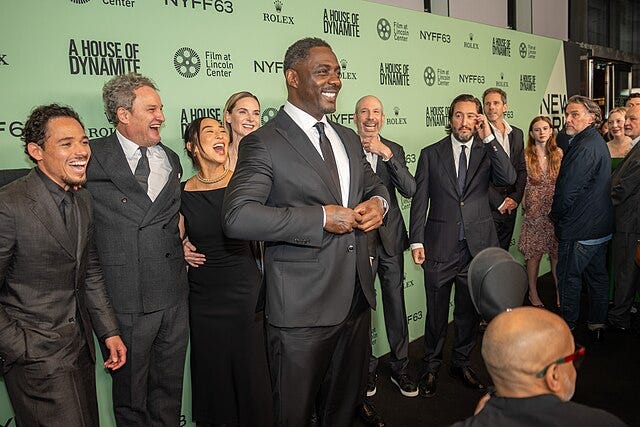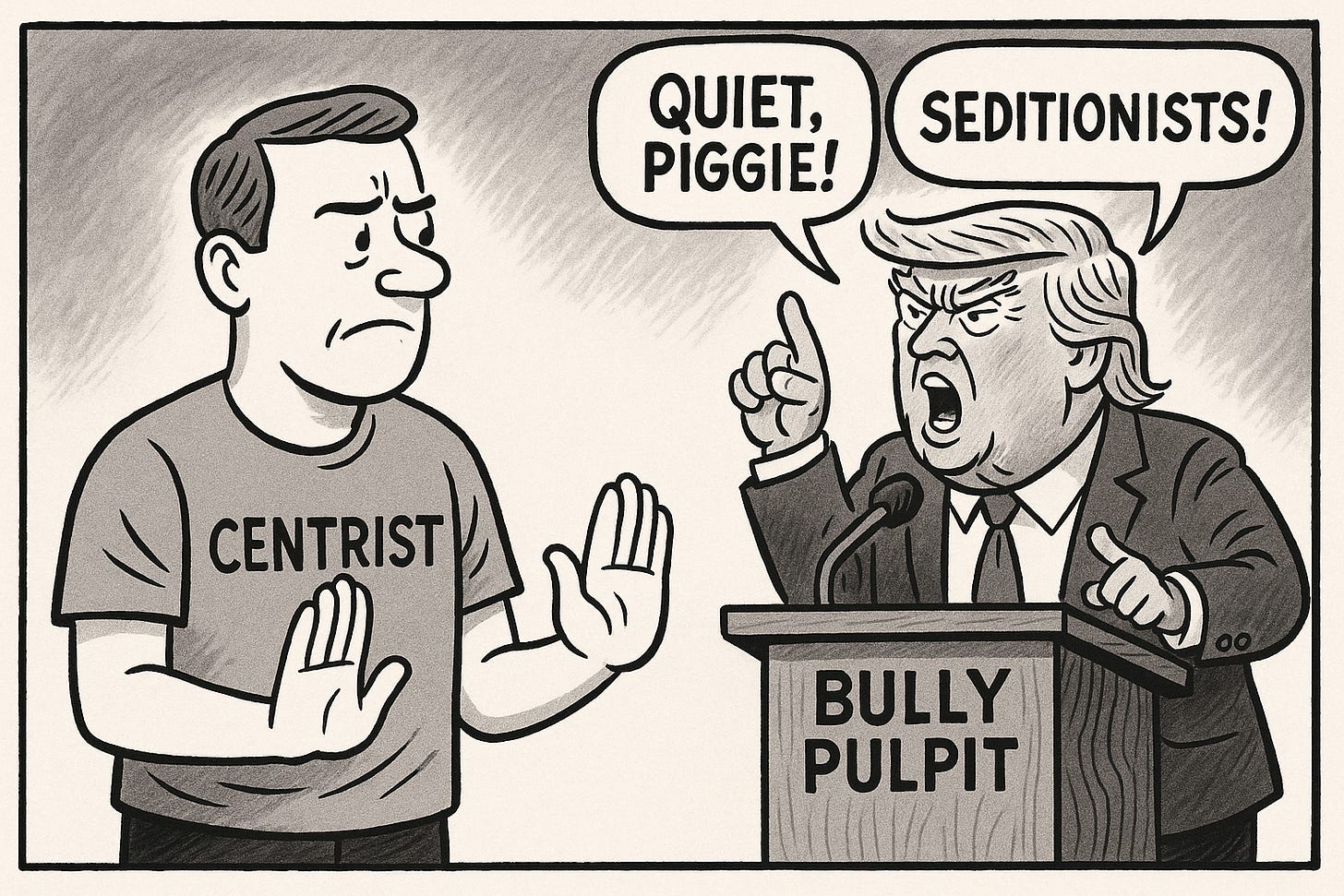Quiet, Piggie...and Other Tales of Centrist Delusion
BONUS: A House of Dynamite movie reflections.

In a nation where it is now normal for the president to call a journalist “piggie” and accuse public servants of sedition for urging military personnel not to follow illegal orders, we must ask ourselves: has the worst yet to come?
This week, the U.S. Coast Guard considered allowing swastikas and nooses to be reclassified as merely “potentially divisive” rather than outright hate symbols. That decision, though swiftly walked back, is pretty on the nose. It’s an ominous development for a once-storied branch of the military. It’s a reminder that institutional rot often starts with rhetorical decay.
The devolution of this moment is built on a fractured national memory of the Civil Rights era. Some profited from the belief that racism had been solved, treating the era as a closed chapter in a moral fairytale. Others lived in its reactionary aftermath, where the backlash against Black advancement was rebranded as political consensus, an embrace of economic inequality and militarized policing, so long as it was marketed with fear of the other.
What’s most tragic is that the people entrusted with narrating this moment, the so-called stewards of democracy, are trapped in a language and framing that not only birthed the current moment but now actively alienates the public. Their tone-deaf commitment to civility politics, and shallow historical analogies makes democracy feel like a stale rerun from the ‘90s rather than a vital experiment in peril.
History and memory are deeply intertwined. Those who recall the Civil Rights era as an existential threat to American hierarchies, legal, racial, patriarchal, are drawn to today’s neon-lit authoritarianism with its branded dominance and casual cruelty. Meanwhile, those who saw that period as a turbulent but resolved moral reckoning are still clinging to illusions of civic rationality and institutional norms, even as those very norms collapse in real time. America’s long-standing identity groups, be they racial, regional, religious, or ideological, remain the true organizing principles of its politics, not pluralism or policy.
We live in interesting times, yes—but also hazardous ones. The president of the United States is using the bully pulpit not just to insult journalists, but to label his political opponents as seditious traitors, laying rhetorical groundwork for violence.
His followers hear the call. His sympathizers excuse it. His enablers shrug.
And yet, democracy is being sold back to us in algorithmically-optimized pundit-speak by legacy media and elite commentators who still believe David Broder and the Clinton Global Initiative were high-water marks of civic health. This is not just a communications failure, it’s a moral one.
Bathed in the floodlights of spectacle and terror, the nation teeters toward decadent decline. The post-Cold War years increasingly resemble a grand exercise in elite navel-gazing, where myth-making replaced reckoning, and historical amnesia passed for unity. In the harsh light of unfiltered memory, Trump doesn’t appear as a deviation, but as the inevitable sequel to the triumphalism of a nation that elected its first Black president and then refused to confront the consequences.
The great failure of centrist storytellers, past and present, is not just their inability to stop the slide. It’s that they still can’t tell the story honestly.
A House of Dynamite

I watched Kathryn Bigelow’s film A House of Dynamite, and it is haunting. The film essentially shows a world where all the defense spending in the world can’t avert nuclear annihilation. After decades of arms races and failed disarmament, we now live in a house packed with dynamite—silent, inert, until someone flips the wrong switch or stumbles in the dark.
Keep reading with a 7-day free trial
Subscribe to Stew on This to keep reading this post and get 7 days of free access to the full post archives.





